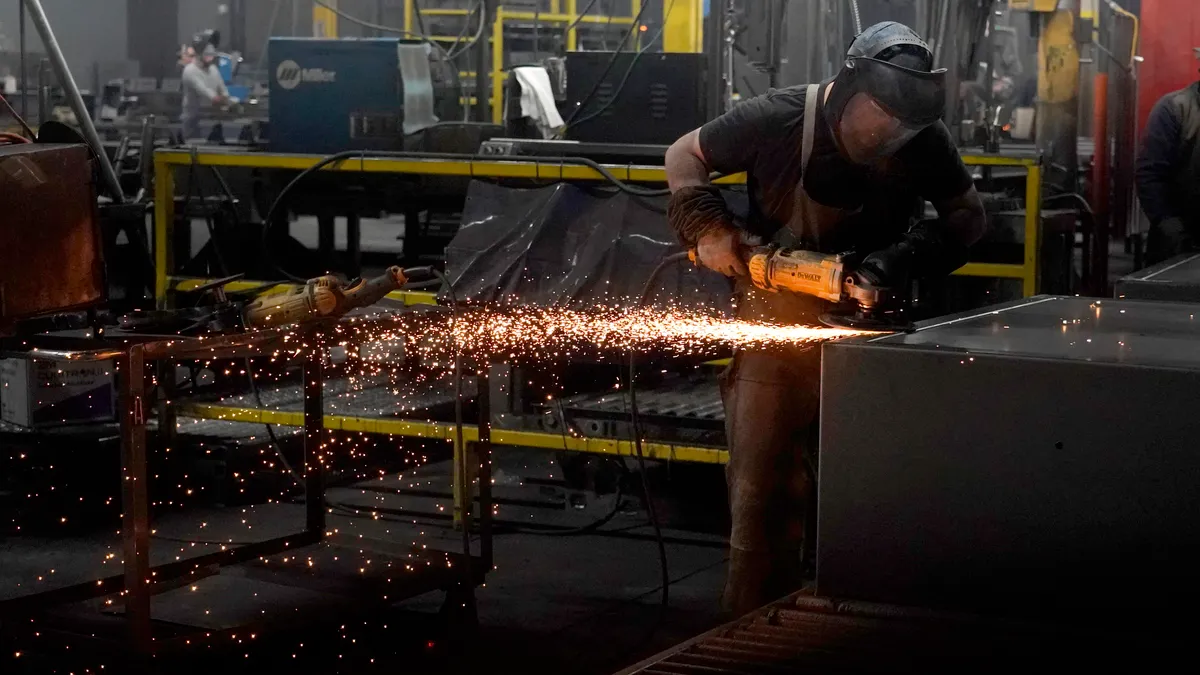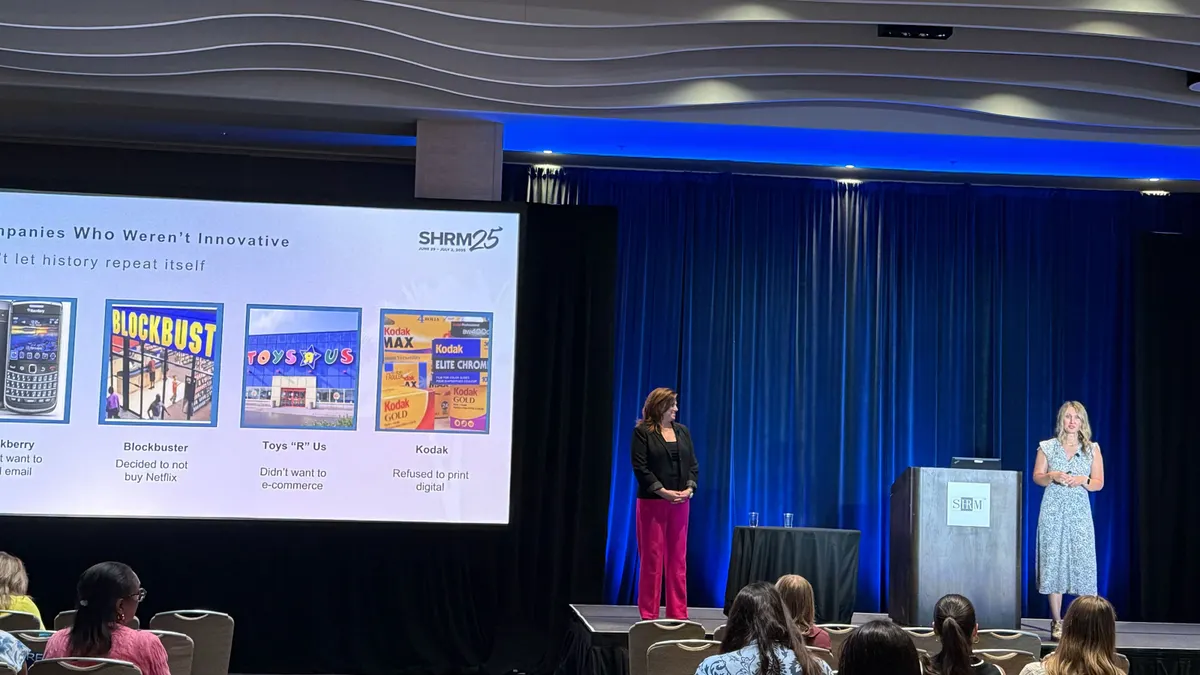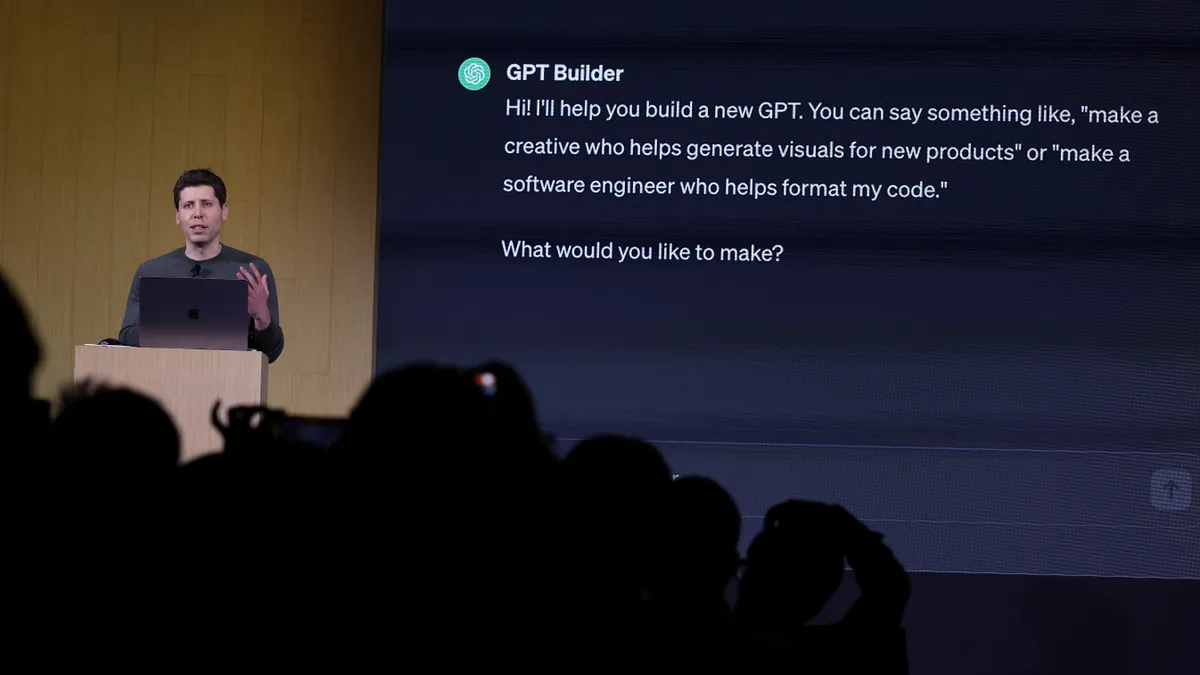The Trump administration is a vocal supporter of apprenticeship programs, even accepting the challenge posed by Salesforce CEO Marc Benioff to create 5 million apprenticeships in five years.
Some experts say that apprenticeships could be the link between employers with millions of job openings, and the millions of job seekers looking for work. But how do you make 5 million high-quality apprenticeships actually happen? That was the focus of Tuesday's Third Annual Transatlantic Apprenticeship Exchange Forum at the Urban Institute.
Panelists and experts from the public and private sectors discussed potential solutions for employers, as well as what the U.S. can learn from the successes and failures of similar programs that took off in the late 90s in the U.K.
Central to the implementation of apprenticeships in the U.S. are three practical questions related to future scalability.
Who should pay?
A contentious point remains for employers, employees and the government: apprenticeships are expensive. They are the "Cadillac" of training, the gold standard by which many programs are evaluated, said Tamar Jacoby, president and CEO of Opportunity America. But the costs are heavy, including training fees and payroll for working apprentices.
There is little consensus currently on the level of government involvement required for such programs. Labor Secretary Alexander Acosta stated during the first meeting of the U.S. Department of Labor's (DOL) apprenticeship task force that the current apprenticeship program "does not work," Politico reported. His DOL wants to put businesses and business groups in “the driver’s seat” (a common phrase used at the forum) of apprenticeship creation and oversight, rather than the government.
Overall, panelists acknowledged the value of government involvement in setting up the necessary infrastructure for apprenticeship programs. Public funding may be a key part of moving apprenticeships to scale, said Steve Middleton, CEO of Elite Apprentices, an intermediary training partner. Small and medium businesses also have to be taken into account; they may not be able to afford to pay for an apprenticeship program without the proper systems in place. And that may include having apprentices pay into the program themselves, said Robert Park, vice president of Meritize.
The U.S. is in a unique position in that it has 50 states that can experiment with 50 different programs, Park added. Many on the panel called for some form of "hybrid" solution between public and private payouts. But such investments have not yet been made, said Andy Van Kleunen, CEO of the National Skills Coalition — an important part of allowing skilled intermediaries to get involved at all.
What should an apprentice learn?
For an apprenticeship program to move to scale, participants have to learn skills that can be carried across an industry. But for employers to invest in apprenticeships, some amount of personalization and flexibility is necessary.
The U.K. has approached this problem by having groups of employers come together to create standards around specific occupations, David Willett, head of propositions at The Open University, said. Those standards are published online for anyone to view.
Hannah Lloyd, managing director at Element Skills Training, said that they propose standards to employers, who are then allowed to propose standards unique to their job needs — giving employers flexibility but keeping everyone accountable. Willett also proposed that employers align with professional groups to make professional credentials part of the apprenticeship program.
Skill portability needs to be paramount, said Daniel Kuehn, a research associate at the Urban Institute, especially in a large country like the U.S. "If you go to a program in one state, it should be valid across the nation," he said.
But either way, employers need to be in the conversation when it comes to deciding which skills are codified as standards. "Training without a job at the end is just training for training’s sake," Nicholas Wyman, co-founder and CEO of the Skilling Australia Foundation, said.
How should apprenticeships be sold and organized?
Apprenticeships are sold, not bought, Kimberly Nichols, CEO of Franklin Apprenticeships, said. In other words, employers still need to be convinced they are worthwhile. At the moment, few are clamoring to be first.
But there are some successful examples. South Carolina has found strong success with its Apprenticeship Carolina program, already surpassing its goal to enroll 20,000 people by 2020 with 26,000 people enrolled. When the program started in 2007, only 800 people signed up.
"Our program has grown tenfold, so it can be done," Brad Neese, associate vice president and director of Apprenticeship Carolina, said. Their program positions itself alongside South Carolina’s "technical colleges," or community colleges, leveling the playing field somewhat — and potentially ameliorating the lack of alignment between what employers need and what educators may be teaching.
That separation has become “appalling,” said Ned McCulloch, global issue manager of skill development and education at IBM, and it’s one reason why Big Blue has instituted its "new collar job" program. About 15% of the company's hires in the U.S. don’t hold a four-year degree, and that number will continue to rise. So while employers may not be clamoring for apprenticeships just yet, they might if the programs advertise themselves as educational opportunities that create skilled employees.
To create these “nationally recognized” credentialing programs (don’t call the skills portable, Neese has learned, as employers fear apprentices will jump ship if phrased as such), employers need to be engaged sector by sector, not one by one, said Graham Hasting-Evans, group managing director at NOCN. That way, apprenticeship programs can focus on developing the jobs of the future and creating a sustainable workforce — not just on the needs of the moment.





















